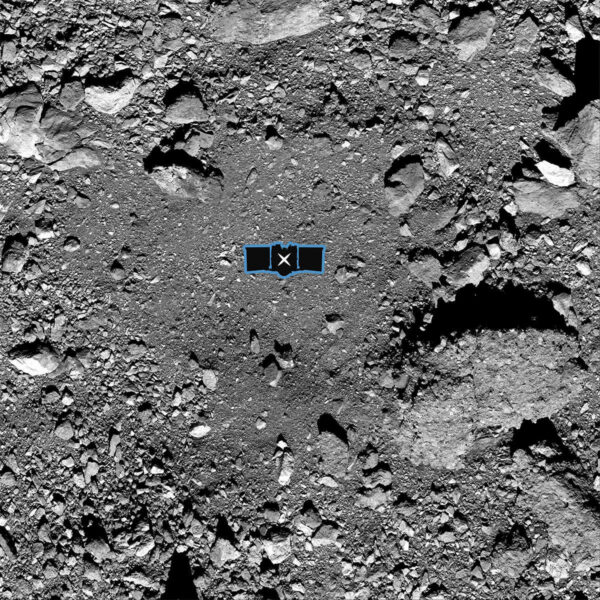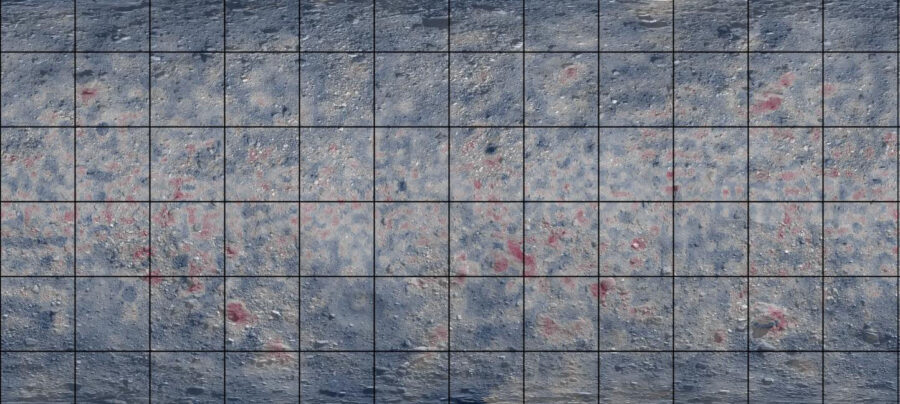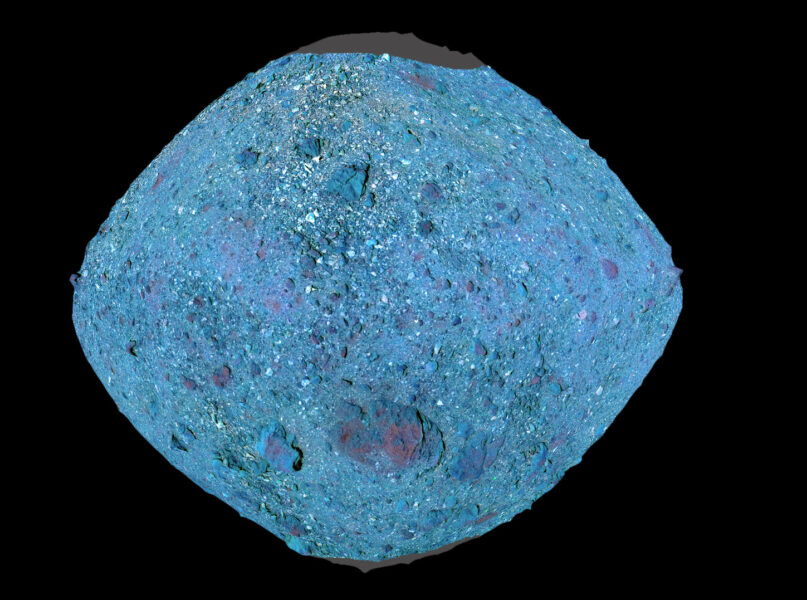NASA’s Osiris-REX mission has found evidence of ancient water flows on the surface of asteroid Bennu.
Carbonate rocks that crystallized just a few million years after the birth of the solar system now lie on the surface of near-Earth asteroid 101955 Bennu. They were likely born within water flowing inside a much larger planetesimal before ending up on the asteroid’s surface.
NASA's Osiris-REX mission spotted the rocks while searching the 500-meter (0.3-mile) rubble-pile asteroid for a place where it can safely collect 60 grams of small rocks on October 20th. The spacecraft will deliver its sample to Earth in 2023.

Researchers also identified a half-dozen anomalously bright, large boulders as pieces of asteroid 4 Vesta. The boulders stand out from the darker ones that cover most of the surface. The asteroid must have picked up the interlopers as it wandered through the asteroid belt to its present trajectory, which takes it from the orbit of Mars to about 15 million kilometers inside Earth's orbit.
NASA chose Bennu for its first asteroid sample-return mission because it’s of a primitive, carbon-rich type known as carbonaceous chondrites. Scientists have only examined such asteroids in the form of meteorites, altered by passage through Earth's atmosphere.
Discovered in 1999, Bennu's proximity also makes it relatively easy to reach from Earth — although perhaps it’s a bit too close for comfort. It has a 1 in 2,700 chance of hitting Earth before 2200, making Bennu the second most dangerous asteroid on the Jet Propulsion Laboratory's Sentry list.
A Glint from Past Water
The carbon in Bennu’s rocks makes it one of the darkest objects in the solar system, reflecting only 4.4% of sunlight. But high-resolution images from Osiris-REX revealed reflections several times stronger from some small (several cm wide and up to 150 cm long) patches on some boulders.
The reflections caught the eye of Hannah Kaplan (NASA Goddard), who led a group that identified the source of the bright spots: they’re rich in carbonates, particularly calcite, a highly reflective form of calcium carbonate. In the October 8th Science, Kaplan and colleagues argue that the bright regions are veins of minerals that precipitated out of hot water flowing through cracks deep inside a young planetesimal. (Previous signs of ancient water on Bennu came from another compound known as hydroxyls found on the surface.)

"We think the water was flowing really early-on, within a few million years of the solar system forming," Kaplan says. By then, Bennu’s parent body had heated enough to melt the ice it had gathered, dissolving minerals into the water that flowed through the porous interior. Where the water deposited the minerals, they crystallized to become calcite-rich veins.
Comparing spectroscopic analysis of the mineral-laden veins to laboratory experiments, the team concluded that the water had flowed through 20 to 45 kilometers of rock on either side of the vein. That puts the parent body’s size in the 100-kilometer range, about the range predicted for planetesimals in the early solar system. However, no signs of similar large-scale hydrothermal systems have been seen in anything smaller than the 960-km dwarf planet Ceres.
Ed Young (UCLA) was impressed with the evidence for large-scale fluid flow within the parent bodies of carbonaceous chondrites like Bennu. He had actually suggested the possibility in 1999, but back then, he had studied only small samples from meteorites. “It takes the [large] ‘outcrop’ scale of these new Osiris-REX results to substantiate that this really happened,” he says. “The results are convincing.”
Making Solar System History
Half-kilometer Bennu is likely a chip off that planetesimal block, formed from the debris in a catastrophic collision that happened some 0.8 to 1.5 billion years ago. It probably belongs to one of either the Eulalia or Polona asteroid families, both of which originated in collisions at about that time, says Daniella DellaGiustina (University of Arizona). Then, sometime between a few million and a few tens of millions of years ago, gravitational interactions with the giant planets and long-term interactions of solar radiation with spinning bodies shifted Bennu to its current near-Earth orbit.
That migration through the asteroid belt allowed Bennu to collect additional rubble from other sources, such as the six Vesta-like boulders reported in Nature Astronomy. They are rich in a distinctive form of basalt that can only form by solidification from magma. The minerals that make up most of Bennu could not survive melting. In fact, the only asteroid known to have melted and differentiated is Vesta, one of the four largest objects in the main belt. Indeed, Bennu’s bright boulders match the distinctive spectra of meteorites earlier identified as coming from Vesta.

DellaGiustina et al. / Science 2020
DellaGiustina says the discovery shows that rubble-pile asteroids record the mixing of materials in the solar system. But so far we have no way to identify rubble from other objects similar to Bennu. We should learn more when Osiris-REX brings the pebbles it scoops from Bennu's surface to a terrestrial laboratory, where state-of-the-art analytical equipment can examine their composition in much more detail.
 3
3









Comments
Lindsay
October 9, 2020 at 5:01 pm
Wonderful article Jeff. Can someone calculate the probability of Bennu making an Earth flyby within 1,000 km of Earth's surface before the year 2200? And, what would be the approximate angle that Bennu would hit Earth's atmosphere in 2020?
You must be logged in to post a comment.
Peter Wilson
October 12, 2020 at 2:12 pm
It has a 1 in 2,700 chance of hitting Earth before 2200. and roughly the same odds of coming withing 1,000 km. Bennu will NOT hit Earth's atmosphere in 2020...at any angle.
You must be logged in to post a comment.
Yaron Sheffer
October 13, 2020 at 10:26 am
Well, reading the article explains it all, but the title was misleading me to assume that ancient water flows happened on Bennu, which is very hard to believe. Only the evidence is found there...
The last image of "blue" (Avatarian?) Bennu is magnificent. I mean, this is the most beautiful pile of rocks that I've ever seen!
You must be logged in to post a comment.
You must be logged in to post a comment.